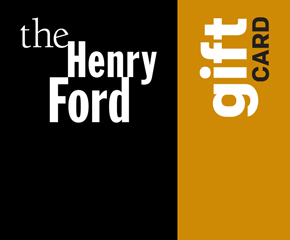
Search Help
If you are looking for a very specific object or for artifacts from a specific place, time, or collection, The Henry Ford's digital collections contain many metadata fields that allow for targeted searching. This guide details the fields available on Advanced Search and the types of values that can be found in each.
Artifact Title: Often contains key information about artifacts, including people names, place names, and dates, as well as other keywords.
Collection Title: The official title of the archival collection to which a document or photograph belongs, for example “Firestone Family papers,” “Trade Catalog collection,” or “Leon Bollee photographs.” May also be populated for 3D collections, but this is rare.
Object ID: The alphanumeric unique identifier for an object assigned by The Henry Ford. Object IDs may follow many patterns, including “64.167.1859.82,” “P.DPC.014461,” “75.121.5,” “EI.21.6,” etc.
Object Name: Use this rubric to search by the type or category of artifact—e.g. “hat,” “photographic print,” “camera,” “automobile,” “steam engine.”
Object Summary: Searches narrative content associated with an artifact record, which may contain additional details about the people, places, and history of that object or type of object not included elsewhere in the record.
Specifications: A very small percentage of artifact records contain metadata specific to that variety of object. Some of the information best searched here includes things like wheelbase, weight, and horsepower for automobiles; number of pieces, fabric, and stitches per inch for quilts; and ingredients, form, and size for patent medicines.
Material: What the artifact is made of, for example: “paper,” “rubber,” “iron,” “velvet,” “glass.”
Color: The dominant color(s) of an object, e.g. “black-and-white,” “purple,” “ivory,” “blue,” “gold.”
Technique: The method(s) of production of the artifact, e.g. “typewriting,” “weaving,” “digital imaging,” “photoengraving,” “hand sewing,” “gelatin dry plate process.”
Inscription: Any text found on an artifact, transcribed exactly as it appears, e.g. “CHRISTIAN DIOR / PARIS / MADE IN FRANCE / 1943,” “19 M.V.W. 1925,” “BAUSCH & LOMB OPT. CO. PAT. APP'D,” “PATENTED JANY. 5, 1897. EASTMAN KODAK CO.”
Archival Description: Searches several narrative fields on archival collection records (which are present but relatively rare within our digital collections) derived from information in that collection’s finding aid, including a general summary of the collection, biographical and/or historical information about the creator or contents, and the types of materials that are included in the collection.
Creator Name: The person or organization that created the artifact, when known, e.g. “Ford Motor Company,” “Detroit News,” “Ford, Edsel,” “St. Laurent, Yves” (note that personal names will be in last-name-comma-first-name order).
Place of Creation: The location where the artifact was created, when known, e. g. “Paris, France,” “New York, New York,” “Detroit, Michigan,” “Maine.”
Keywords: Searches a variety of topical terms, including the names of people and organizations associated with that artifact (excluding the artifact’s creator); geographic places associated with the artifact (excluding its place of creation)--for example, a place it may have been used; and general subject terms, e.g. “aviation,” “buses,” “cemeteries,” “inventions,” “12 Hours of Sebring,” “World’s Fair of 1982,” “Star Wars,” “James Bond.”
Object Type: Limit to only objects that are 3D (e.g. racing cars, phonographs, dresses), documents (e.g. books, letters, postcards, prints), photographs (e.g. digital images, negatives, photographic prints, tintypes), audio, or video.
Date: Dating artifacts is difficult, and often the best we can do is narrow the possible date of creation down to a range of years or decades. In some cases, though, we can pinpoint an exact date. This will search for artifacts that we can narrow to a date, month, and year (e.g. September 1, 1956)—not all specific dates will return results. You can also search for a specific year.
Media Type: As differentiated from Object Type, which represents what the artifact itself is, this field will narrow your results to items for which we’ve created media beyond simply still images—e.g. audio, video, or a 360-degree image depicting or relating to that object. These will be found on a relatively small percentage of our collections.
Item Location: Limit your search to items not on display, or on display at a specific venue.


